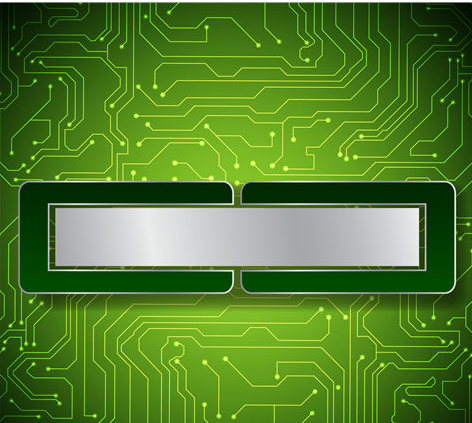The advantages and disadvantages of SMT patch and PCBA through hole
SMT patch and PCBA through-hole: advantages and disadvantages When printed circuit boards first become a must in the production of electronic products, through-hole components are the only components that can be used. However, with the passage of time, surface mount technology (SMT) parts have gradually become more and more popular until they finally become the main component packaging form used on PCBs today. Now, there are many reasons for the popularity of SMT parts:
Size: It is not necessary for the lead wire to drill down through the hole. By default, the SMT part is a smaller part. This is more attractive to designers who are trying to assemble more circuits on smaller-sized boards in today's electronic products.
Cost: Since SMT parts are smaller parts by default, the manufacturing cost is also lower. This makes SMT parts more cost-effective than through-hole parts.
Availability: As SMT parts become smaller and cheaper, they have replaced through-hole parts. This is especially true for passive devices such as resistors and capacitors, where SMT component packaging is usually no longer the only option.

Electrical performance: Smaller parts make the distance of the electric signal travel shorter, thereby shortening the flight time of the signal. This makes SMT components superior to through-hole components in terms of electrical performance.
For these reasons, it is easy to think that all PCB components should be surface mount parts. However, there are many good reasons why through-hole parts are still used when assembling circuit boards:
Power supply: For components used in high-power circuits, SMT packaging is not a good choice. High-power components usually contain more metal, which makes it more difficult for surface mount soldering technology to achieve good soldering results. In addition, larger power components usually require stronger mechanical connections through vias to achieve high voltage, thermal, and mechanical stability.
Strength: Components such as connectors, switches, or other interface components require the strength provided by soldering the leads into the drilled hole. The constant physical stress of the components in normal use may eventually destroy the SMT solder joints.
Availability: Some components, especially those larger components used in high-power applications, are not yet available with true SMT equivalent components.
Smd's reflow soldering process and the benefits of Ir soldering
1. SMD reflow soldering:
Reflow soldering by infrared heating, usually called infrared soldering, is mainly used for soldering substrates with surface mount components. Typically, the substrate is conveyed through a machine with a series of heating elements, such as rod-shaped radiators positioned transverse to the conveying direction. Components can be placed above the substrate being transported, but in many cases there are also components below the substrate to increase the heating rate and improve temperature uniformity. The possible settings for this type of machine are shown in the figure below.
SMD reflow soldering
Schematic diagram of IR welding furnace. The main characteristic of heating is the wavelength of the components in the machine.
2. The benefits of IR welding:
i) It is a clean and environmentally friendly method
ii) The heating is non-contact type and does not require precise positioning of the product to be welded
iii) The heating power is easy to control
The main disadvantage of IR heating is the difference in heating rate, which is caused by the different absorption coefficients of the materials used and the thermal mass of different components, which are related to the surface area that can be exposed to IR radiation.
The temperature in the IR furnace is a mixture of radiation and convection, and it is not clear. It is almost meaningless to measure the temperature with a thermocouple hung in the furnace; the only useful method is to measure the temperature of a specific product when it is transported through the furnace. If there are heaters below and above the conveyor belt (which is usually the case), they will affect each other's temperature control, especially when they can "see" each other.
The main difficulty in infrared soldering of circuit boards with surface mount components is that SMT components with different heat requirements have different heating rates. This means that when soldering multiple components at the same time, some may have exceeded the soldering temperature, while others are still far away from this temperature. When heating continues until reflow, some components will reach unbearable high temperatures. In an actual furnace, a three-step heating method is usually used: start rapid heating, balance, and rapid heating again. For the second step, the area in the furnace can be adjusted to create a temperature plateau in the area between 120 0 C and 1600 C, in which the temperature rise is as low as about 0.50 K/s and is restored to a sharp rise in the welding temperature The temperature difference can be homogenized before. Rapid heating during the welding phase is necessary to limit the duration of this phase. In addition, the most important thing is that there is no or only a small temperature difference between the different components before the rapid heating of the welding phase starts, in order to avoid any such welding defects, such as cold welding, leaching. Ideally, at the end of the homogenization step, that is, before reflow, the temperature of the light component and the heavy component are practically the same. However, this is difficult to obtain in production recirculation systems, even if these systems are quite long. The temperature-time curve is measured in a large-scale production furnace; in the first step, the pin temperature of the SOT-23 package rises faster than that of the PLCC-68 package; then the temperature difference is reduced. During the second stage of heating, the difference increased slightly and decreased again. After that, the SMT soldering step with a rapid increase in temperature difference began, but at this time the difference between the two temperature curves is still large, so the difference between the peak temperatures reached is also large.